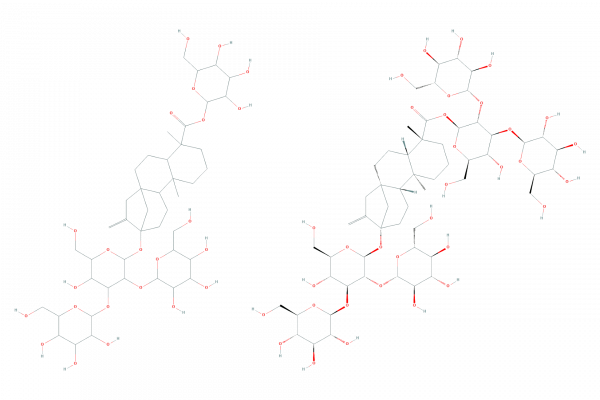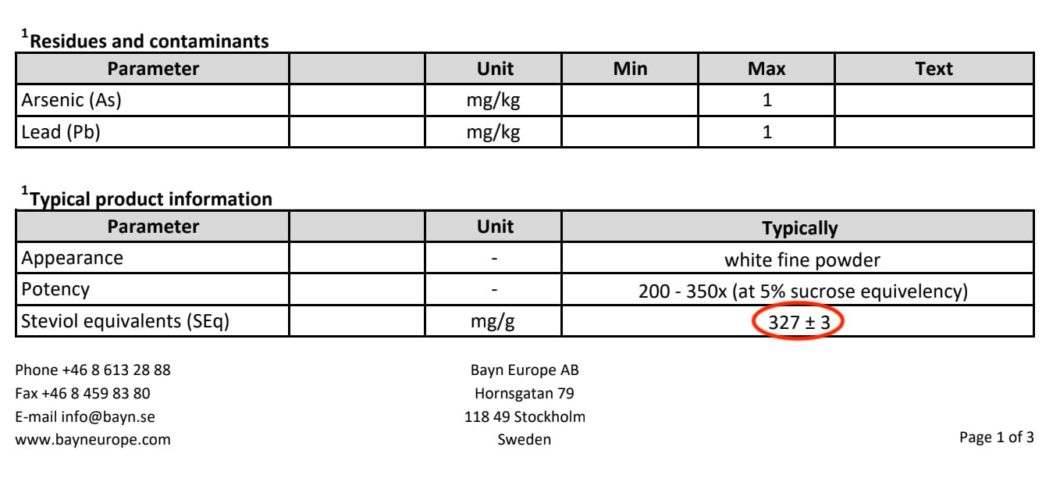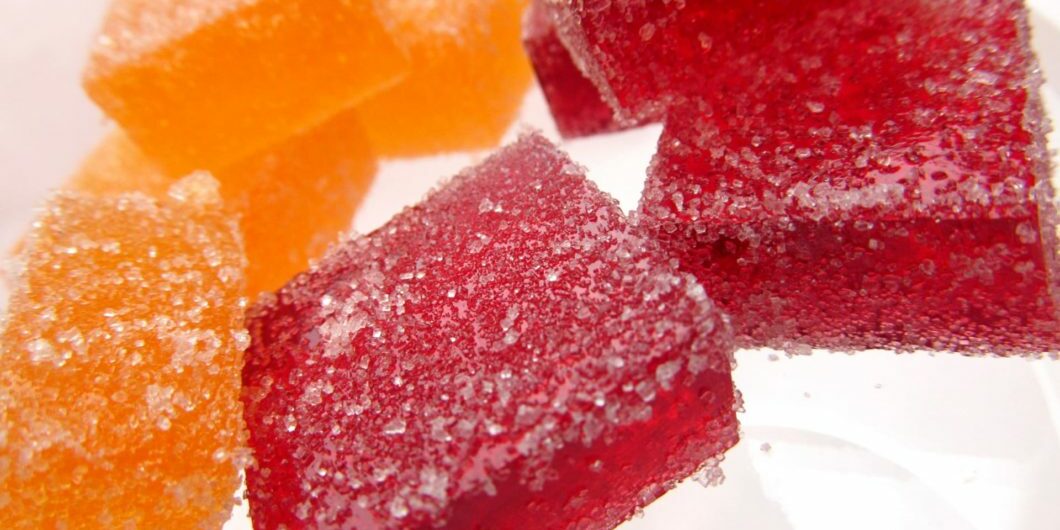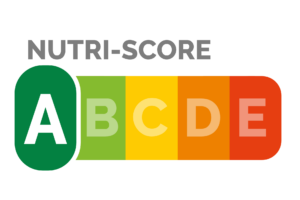Product development • Steviol glycosides are suitable for a variety of foods. They can be used in everything from ice cream and breakfast cereals to fruit preparations and different types of drinks. But there are limitations regarding dosage. You have to take into account the Accepted Daily Intake (ADI) and something called steviol equivalents. Does it sound messy? We're sorting it out.
So you want sweet with stevia? Great! But do you know that there are limits to how much you can use in different foods? These limits are indicated by steviol equivalents. Do you know what it is? Join us as we explore these mysteries together.
Steviol glycosides

Initially, it is not the plant stevia but the sweet substances extracted from the plant that can be used. (The only exception is tea, herbal tea or fruit infusion. In these, stevia may be used directly.)
The sweet substances found in stevia are called steviol glycosides. There are 11 approved pieces within the EU. The most commonly used are Reb A and Reb M (Reb is an abbreviation of Rebaudioside).
Like a Christmas tree
Steviol glycosides can be likened to a Christmas tree. The tree consists of a substance called steviol. Steviol is found in all steviol glycosides. Then we have glucose molecules that are linked to steviol. In our metaphor, we can regard them as bulbs hanging in the steviol tree. And the string in which they hang is called glycoside bonds. In this article, you can read more about glycoside bonds. The more bulbs that hang in the Christmas tree, the sweeter it is. The same goes for steviol glycosides.

EU regulation
Although glucose is a form of sugar, the body does not absorb any energy from steviol glycosides, thus not increase blood sugar levels. This is because the body lacks the right scissors (enzyme) to cut the line between the glucose parts and the steviol part (the glycoside bond).
The European Food Safety Authority (EFSA) does not take any risks. Although indigenous peoples in South America have used stevia for centuries and steviol glycosides have been used in food and drink since the 1970s in Japan, within the EU it has been delayed until 2011 to approve steviol glycosides. And then only in certain foods and certain quantities.
The amounts are stated as acceptable daily intake (ADI) of steviol equivalents.
| Foods | NameMaximum level (mg/l or mg/kg as appropriate) | restrictions/exception |
| Flavoured fermented milk products including heat treated products | 100 | only energy-reduced products or with no added sugar |
| Edible ices | 200 | only energy-reduced or with no added sugar |
| Fruit and vegetables in vinegar, oil, or brine | 100 | only sweet-sour preserves of fruit and vegetables |
| Fruit and vegetable preparations excluding compote | 200 | only energy-reduced |
| Extra jam and extra jelly as defined by Directive 2001/113/EC | 200 | only energy-reduced jams jellies and marmalades |
| Jam, jellies and marmalades and sweetened chestnut puree as defined by Directive 2001/113/EC | 200 | only energy-reduced jams, jellies and marmalades |
| Other similar fruit or vegetable spreads | 200 | only dried-fruit-based sandwich spreads, energy-reduced or with no added sugar |
| Cocoa and Chocolate products as covered by Directive 2000/36/EC | 270 | only energy-reduced or with no added sugars |
| Other confectionery including breath refreshening microsweets | 270 | only cocoa or dried fruit based, energy reduced or with no added sugar |
| Other confectionery including breath refreshening microsweets | 330 | only cocoa, milk, dried fruit or fat based sandwich spreads, energy-reduced or with no added sugar |
| Other confectionery including breath refreshening microsweets | 350 | only confectionary with no added sugar |
| Other confectionery including breath refreshening microsweets | 2000 | only breath-freshening micro-sweets, with no added sugar |
| Other confectionery including breath refreshening microsweets | 670 | only strongly flavoured freshening throat pastilles with no added sugar |
| Chewing gum | 3300 | only with no added sugar |
| Decorations, coatings and fillings, except fruit based fillings covered by category 4.2.4 | 330 | only confectionary with no added sugar |
| Decorations, coatings and fillings, except fruit based fillings covered by category 4.2.4 | 270 | only cocoa or dried fruit based, energy reduced or with no added sugar |
| Breakfast cereals | 330 | only breakfast cereals with a fibre content of more than 15 %, and containing at least 20 % bran, energy reduced or with no added sugar |
| Fine bakery wares | 330 | only essoblaten – wafer paper |
| Processed fish and fishery products including molluscs and crustaceans | 200 | only sweet-sour preserves and semi preserves of fish and marinades of fish, crustaceans and molluscs |
| Table Top Sweeteners in liquid form | QS | |
| Table Top Sweeteners in powder form | QS | |
| Table Top Sweeteners in tablets | QS | |
| Soups and broths | 40 | only energy-reduced soups |
| Sauces | 120 | except soy-bean sauce (fermented and non-fermented) |
| Sauces | 175 | only soy-bean sauce (fermented and non-fermented) |
| Dietary foods for special medical purposes defined in Directive 1999/21/EC (excluding products from food category 13.1.5) | 330 | |
| Dietary foods for weight control diets intended to replace total daily food intake or an individual meal (the whole or part of the total daily diet) | 270 | |
| Fruit nectars as defined by Council Directive 2001/112/EC and vegetable nectars and similar products | 100 | only energy-reduced or with no added sugar |
| Flavoured drinks | 80 | only energy reduced or with no added sugar |
| Beer and malt beverages | 70 | only alcohol-free beer or with an alcohol content not exceeding 1,2 % vol.; ‘Bière de table/Tafelbier/Table beer’ (original wort content less than 6 %) except for ‘Obergäriges Einfachbier’; beers with a minimum acidity of 30 milliequivalents expressed as NaOH; Brown beers of the ‘oud bruin’ type |
| Other alcoholic drinks including spirits with less than 15 % of alcohol and mixtures of alcoholic drinks with non-alcoholic drinks | 150 | |
| Potato-, cereal-, flour- or starch-based snacks | 20 | |
| Processed nuts | 20 | |
| Desserts excluding products covered in category 1, 3 and 4 | 100 | only energy-reduced or with no added sugar |
| Food supplements supplied in a solid form including capsules and tablets and similar forms | 670 | |
| Food supplements supplied in a liquid form | 200 | |
| Food supplements supplied in a syrup-type or chewable form | 1800 |
Source:COMMISSION REGULATION (EU) No 1131/2011
What are steviol equivalents?
But what are steviol equivalents, you might wonder.
All of the steviol glycosides have different characteristics, but they do have one thing in common. They have one and only one steviol part. In contrast, the number of glucose portions varies, thus also the weight of the steviol glycoside molecule. The more glucose parts, the heavier it is.
it is not, however, possible to buy 100 per cent pure Reb A, Reb M and so on. What is available is stevia extract which consists of a mixture of various steviol glycosides, where only one of them is found in a given proportion (or more). For example, our stevia extracts contain 50, 60, 80, 97 or 98 per cent Reb A or Reb M while the rest of the content is other steviol glycosides.
Conversion factor
Because each stevia extract has its own unique mix of steviol glycosides and different steviol glycosides weigh very differently, it is impossible for EFSA to set an ADI expressed in grams per kilogram of body weight. Instead, the concept of steviol equivalents has been invented.
What EFSA wants to limit is the number of molecules of steviol glycosides you get during a day. Since there is exactly one steviol in each steviol glycoside molecule, ADI can be expressed as the number of steviols. It is this number that is the steviol equivalent.
Pure steviol (which is not a steviol glycoside and thus must not be used) has the steviol equivalent 1.
Each steviol glycoside has a conversion factor which is multiplied by the amount of steviol glycoside used. In this way, we get the weight of steviol, which is the substance that is found in all steviol glycosides and for which there is a maximum intake.
The Supplier’s responsibility
Reb A consisting of a steviol equivalent has a conversion factor of 0.33, which is the steviol portion’s share of the entire molecule weight. Similarly, the steviol equivalence can be calculated for each of the 11 approved steviol glycosides by dividing the molecular weight of steviol by the weight of the steviol glycoside.
But as a user of steviol glycosides in your product, you don’t have to count on these things yourself. The supplier of the steviol glycoside should have done this for you. Download some product sheets for our stevia extracts and you will see that we specify the steviol equivalence and that it varies with different extracts. In an extract consisting of various steviol glycosides, the supplier has summarized the conversion factors for the steviol glycosides contained in the extract.

Be on the safe side
But you won’t be getting rid of the math altogether. If you plan to replace sweetness from sugar with stevia extract, you must count on how many steviol equivalents you get in your product and ensure that it does not exceed ADI.
Jam with stevia
We can take Navia 97 as an example. Suppose we should use this kind in a jam application. One Kilo of jam contains about 400 grams of sugar. We must, therefore, have the same amount of sweetness from the steviol glycosides. This means that we need up to 2 grams of stevia extract. 1 gram of Navia has the steviol equivalent of 327 mg. We already know that we are well above the limit as the steviol equivalent for jam goes at 200 grams.
More challenges
In fact, it is not possible to completely replace the sweetness of sugar, only with the help of stevia. At least not if we talk about jams. The steviol equivalent is exceeded no matter which extract you choose. In addition, you have other challenges to address; how should the jam get bulk? It will not get it from stevia. One solution is to use fibre and sugar alcohols to fully replace the properties of sugar. Preferably a sugar alcohol with a good taste and high sweetness such as maltitol.
Expensive and difficult
Does this mean that stevia is forgotten? No, not at all. At the beginning of the article, we thought about stevia as a Christmas tree where glucose molecules are bulbs hanging in the branches. If we consider sugar reduction as a Christmas tree, stevia is the star at the top of the tree. An amazing ingredient that adds extra sweetness needed for your jam to reach new heights.
It sounds pretty good, doesn’t it?. The problem is that it is difficult. There are a plethora of different ingredients to combine with stevia. And then there is the development work, with many pitfalls and potential failures. It is also expensive – both financially and in terms of resources.
There is a solution
But there is a solution. And it is called sweetened fibre and is sold under the name of Eureba.
Eureba is available in different varieties adapted to different types of food. In jam, you should use Eureba D01. For other types of food, there are other varieties. Do not hesitate to get in touch with us. We help you all the way.
Please, share this article if you liked it.
[et_social_share]





